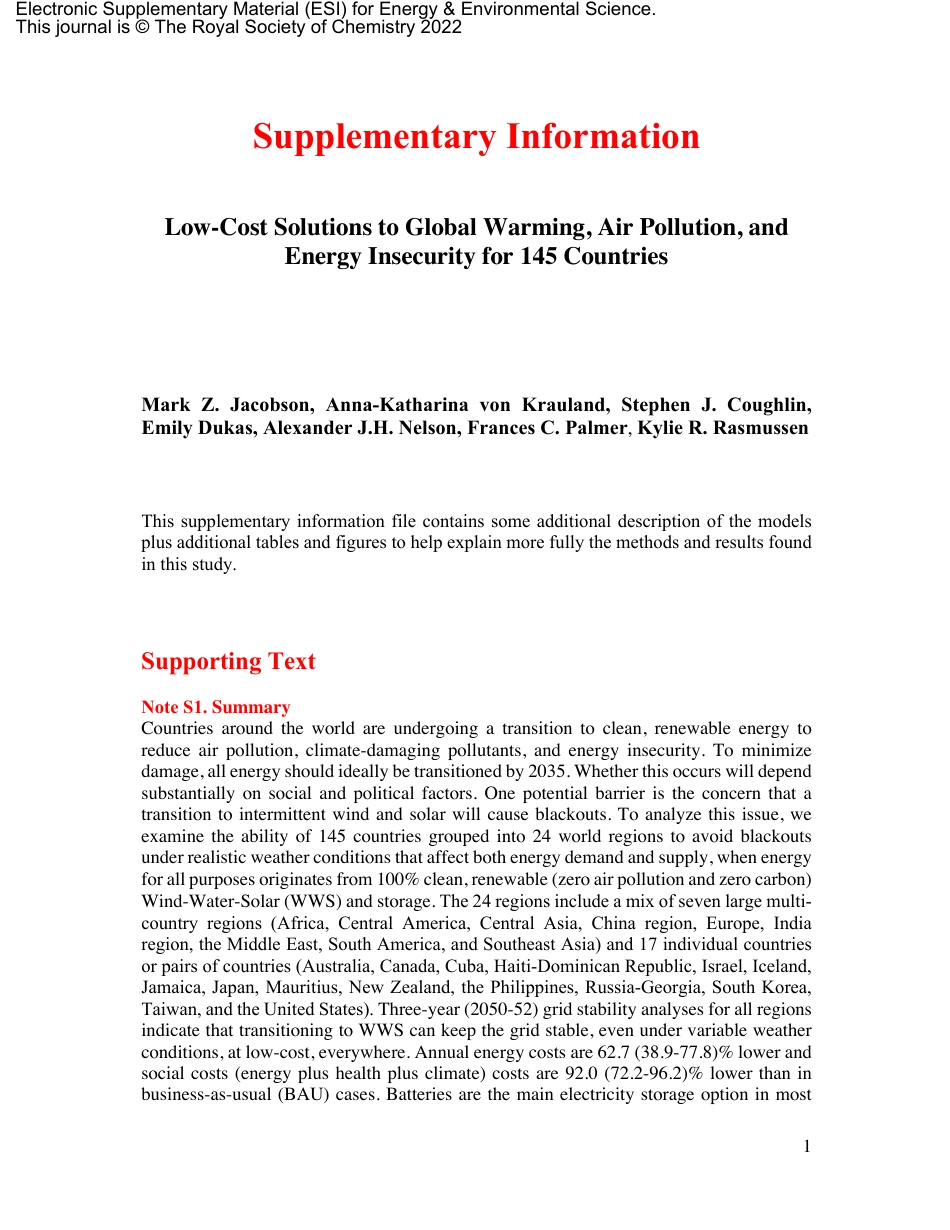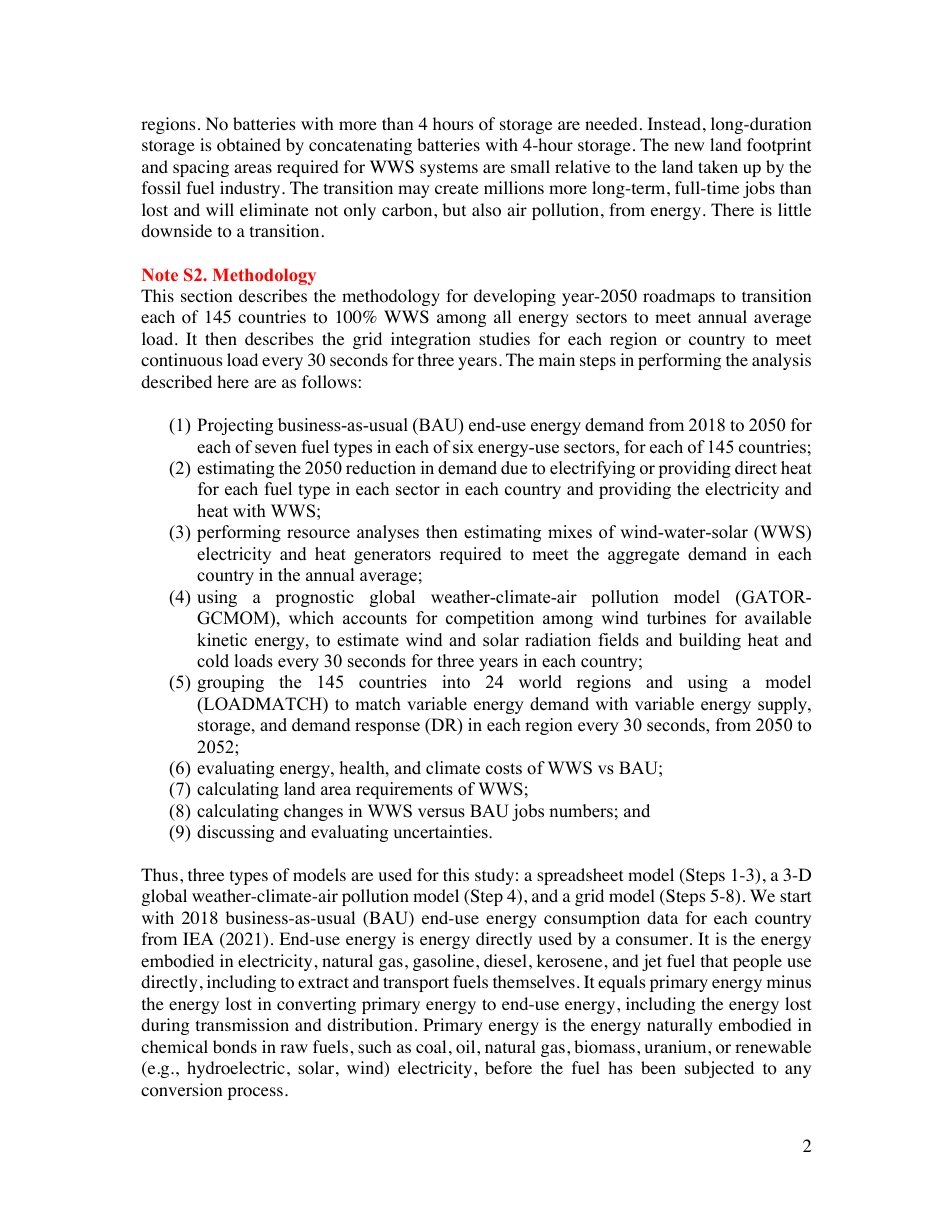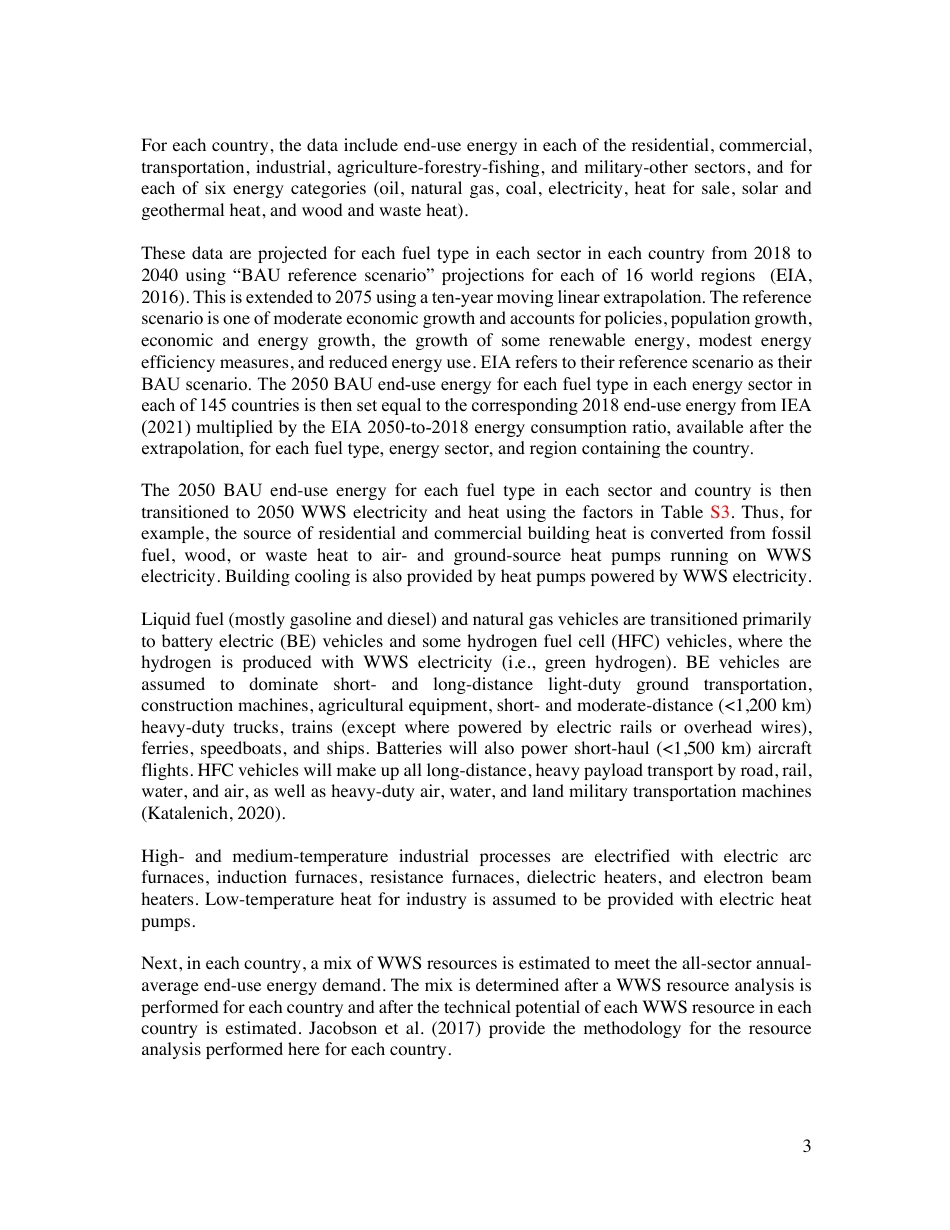1 Supplementary Information Low-Cost Solutions to Global Warming, Air Pollution, and Energy Insecurity for 145 Countries Mark Z. Jacobson, Anna-Katharina von Krauland, Stephen J. Coughlin, Emily Dukas, Alexander J.H. Nelson, Frances C. Palmer, Kylie R. Rasmussen This supplementary information file contains some additional description of the models plus additional tables and figures to help explain more fully the methods and results found in this study. Supporting Text Note S1. Summary Countries around the world are undergoing a transition to clean, renewable energy to reduce air pollution, climate-damaging pollutants, and energy insecurity. To minimize damage, all energy should ideally be transitioned by 2035. Whether this occurs will depend substantially on social and political factors. One potential barrier is the concern that a transition to intermittent wind and solar will cause blackouts. To analyze this issue, we examine the ability of 145 countries grouped into 24 world regions to avoid blackouts under realistic weather conditions that affect both energy demand and supply, when energy for all purposes originates from 100% clean, renewable (zero air pollution and zero carbon) Wind-Water-Solar (WWS) and storage. The 24 regions include a mix of seven large multi-country regions (Africa, Central America, Central Asia, China region, Europe, India region, the Middle East, South America, and Southeast Asia) and 17 individual countries or pairs of countries (Australia, Canada, Cuba, Haiti-Dominican Republic, Israel, Iceland, Jamaica, Japan, Mauritius, New Zealand, the Philippines, Russia-Georgia, South Korea, Taiwan, and the United States). Three-year (2050-52) grid stability analyses for all regions indicate that trans...



